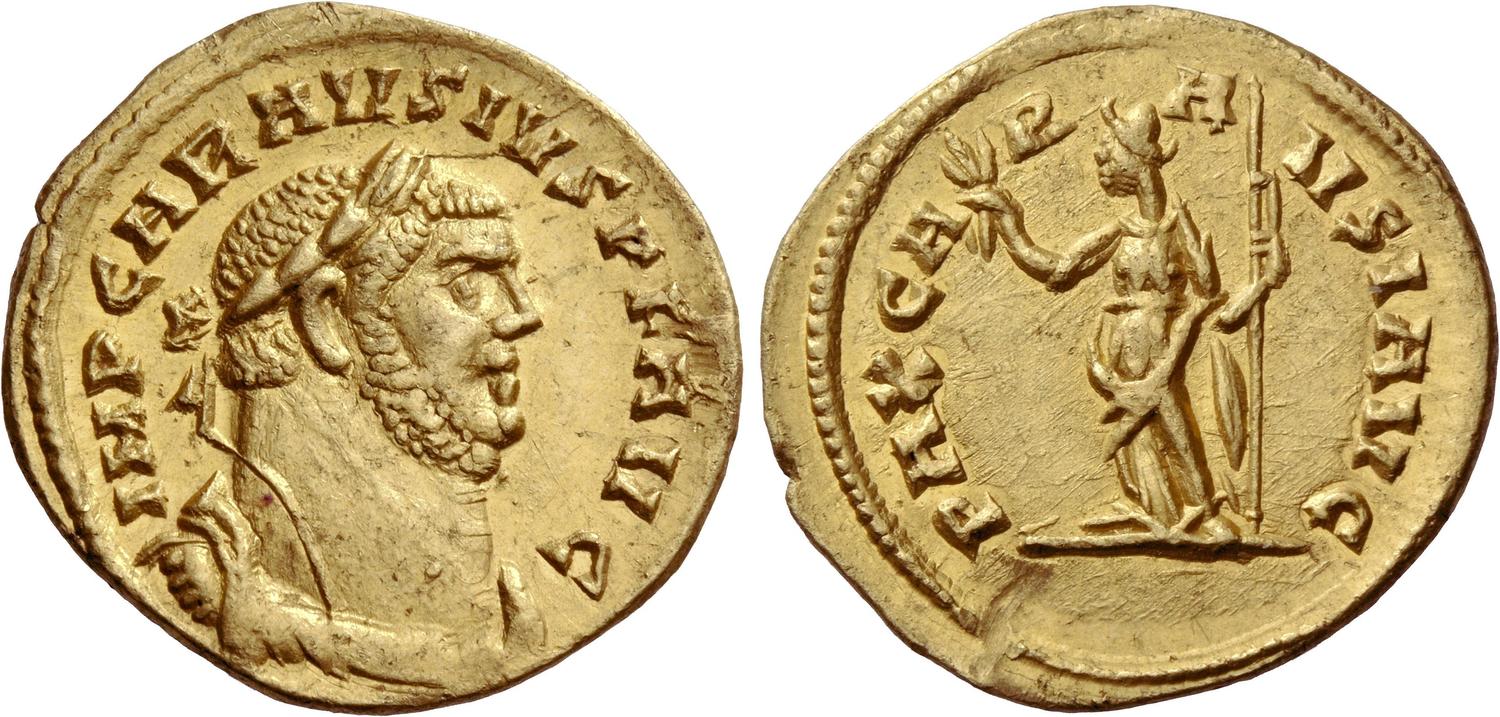The Revolt of Carausius, Ancient Londinium, and the split from Empire
The capital of the UK is today embroiled in a tempestuous storm over its position within the wider European community as the Brexit debate rumbles incessantly on. Some 1700 years ago, the city was the stage for another attempt at political separation. This is the story of the revolt of Carausius.
Rebellion
The 3rd century AD is a challenging era for classicists and ancient historians to study. An endemic weakening of the Roman Empire in the face of external pressures led to a rapid turnaround of emperors and pronounced political and social turmoil. Bloodshed, usurpation, and revolt were common sites in the political landscape. The turbulence was manifest most clearly at the edges of Empire, with a usurper state – the Gallic Empire of the Emperor Postumus – having been established in 260 AD already. Although Gaul, Hispania, and Britain were restored to Roman control by the Emperor Aurelian – most famous for his eponymous circuit of defensive walls around Rome – in 274, the precedent had been set.
In 286 AD, the command of the regional navy in the English channel was given to Carausius. His elevation to the position of admiral crowed a rags to riches story for a man of humble origins. His task, as admiral of the fleet based at Bonoia (modern Boulogne), was to clear the English Channel of Saxon and Frankish raiders and bolster the imperial frontiers against these incursions. Carausius however, was accused of collaboration with the raiders, motivated by financial greed. The Emperor Maximian – who was at this time the Augustus and western colleague of Diocletian – ordered the admiral to be put to death. Rather than accept his fate, Carausius declared himself the Emperor of Britain, separating the province from centralised imperial control. With just the fleet, three legions stationed in Britain, one from neighbouring Gaul, and a scattering of auxiliary units from cross the Empire, Carausius set to the task of presenting his Empire of Britain as a viable, legitimate alternative to Rome.
Becoming British, Remaining Roman?
“Disorder thus prevailed throughout the world, while Carausius was taking arms in Britain…”[1]
The 3rd century is notoriously problematic to explore thanks to a dearth of quality sources, both textual and material. Fortunately, numismatics – ancient coinage – can provide crucial insight into this turbulent period of history. Carausius is known to have appealed to native British discontent with Roman rule, and began minting his own coinage, many of which had legends on them that championed the island province. These included coins that referred to the new ‘Emperor’ as Restitutor Britanniae (the restorer of Britain), whereas others would depict him with Britannia, the personified deity who symbolised the province.
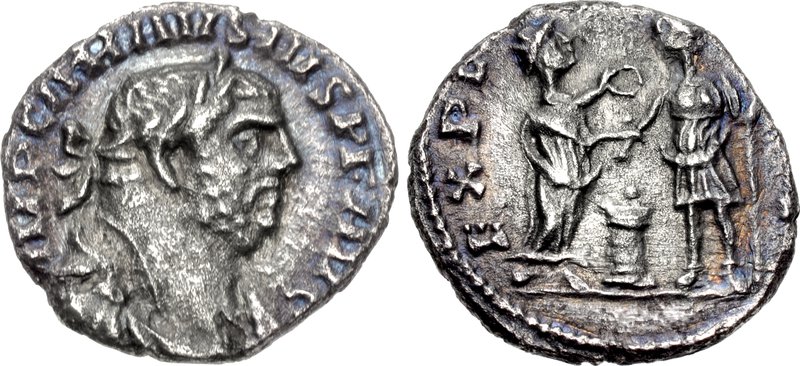
In this denarius of Carausius, one can see the emperor’s portrait on the obverse, whilst on the reverse, one can see Britannia on the right (note her flowing robes) clasping hands with the cuirassed emperor. This was a clear symbol of the usurper’s proclaimed dedication to the island province.
It is nevertheless notable that Carausius seemingly maintained strong ideological links to the Roman Empire as well. In his numismatic presentation he is presented in terms and images that are recognisably Roman, whilst the coins themselves were brought into line with Roman issues. Elsewhere, his epigraphic representation is very reminiscent of Roman tradition, as is indicated by the discovery of a milestone dedicated to Carausius uncovered in Carlisle, at the very edges of the Empire.[2] The usurper’s influence seemingly held sway over the entirety of the province, so it is surprising that his attempted break from the Empire was keen to retain so many recognisably Roman features.
Retaliation
Carausius secession from the Empire was to be short lived. By 293 the Tetrarchs had mobilised, with the Constantius Chlorus – the father of the future Constantine the Great – was tasked with re-establishing imperial control over northern Gaul and Britain. He achieved this by first isolating Britain; by suffocating the Channel – such as through a siege of the port of Bononia – Constantius prevented aid getting into Britain, or rebels getting out. Although no invasion could take place yet, the pressure would prove too much for some: Allectus, who had been acting as treasurer for Carausius, murdered the ‘Emperor’ of Britain and assumed command himself. Three years later, the reconquest of the province of Britain could begin in earnest. The imperial forces landed near to modern Southampton. After burning their ships, they quickly routed the bulk of the rebel forces, including Allectus himself. Archaeologists have identified Calleva Atrebatum (modern Silchester) as a likely site of the rebel’s defeat. The remnants of the rebellious forces were hunted down, with many of them being caught and massacred in Londinium as they were sacking the city, the capital of the island then as now.
Although it is doubtful as to whether Constantius himself ever made it across the Channel in time for the initial battle and subsequent rout, he nevertheless ensured that he took centre stage in the resultant celebrations. Whereas just over a decade previously, Carausius had been proclaiming himself the ‘Restorer’ of Britain, now Constantius was proclaiming himself the Liberator of the island. Again, numismatic evidence provides clear evidence of this:
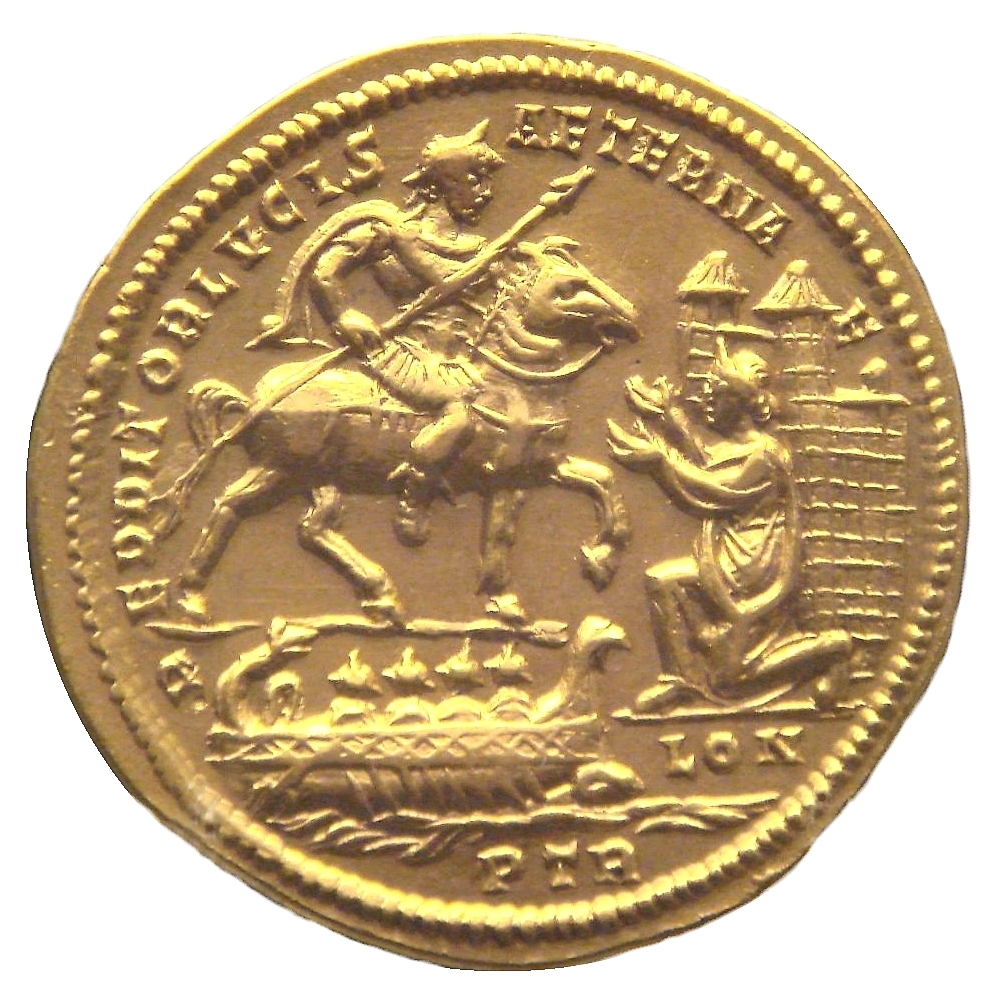
One can see on the coin above Constantius, mounted, being received by a grateful citizen of the city of Londinium (LON is visible just beneath the knees of the native). An electrotype of this rare coin is stored in the British Museum.
As well as celebrating the event on coinage, it would appear that Constantius undertook some efforts to restore Londinium following the destruction it suffered at the hands of Allectus’ followers. A set of thermae, a bathhouse – were built in the forum in around 300 AD. Although comparatively modest in size – especially when compared to other thermae from around the Empire – their construction nevertheless served to symbolise the re-imposition of Roman imperial culture back on to the city and the island more generally.
What to see in Londinium now:
The history of ancient Londinium can be found all over a modern city that generally celebrates its past and makes it accessible and engaging to visitors. The British Museum has a wealth of material relating to ancient history, including Roman Britain, and it should be a priority on any visit. Similarly, the Museum of London is excellent, providing a chronological biography of the city, including a detailed history of Roman Londinium. The displays and material provide an excellent account of the urban development of Londinium, which was situated on the north bank of the Thames, becoming in time the capital of an imperial province. At this museum, one can see a wealth of archaeological material that is clearly laid-out to give visitors a sense of what life would have been like in the ancient city. In the Guildhall Art Gallery, one is able to use digital technology to explore the Amphitheatre which was once in the centre of the ancient city.
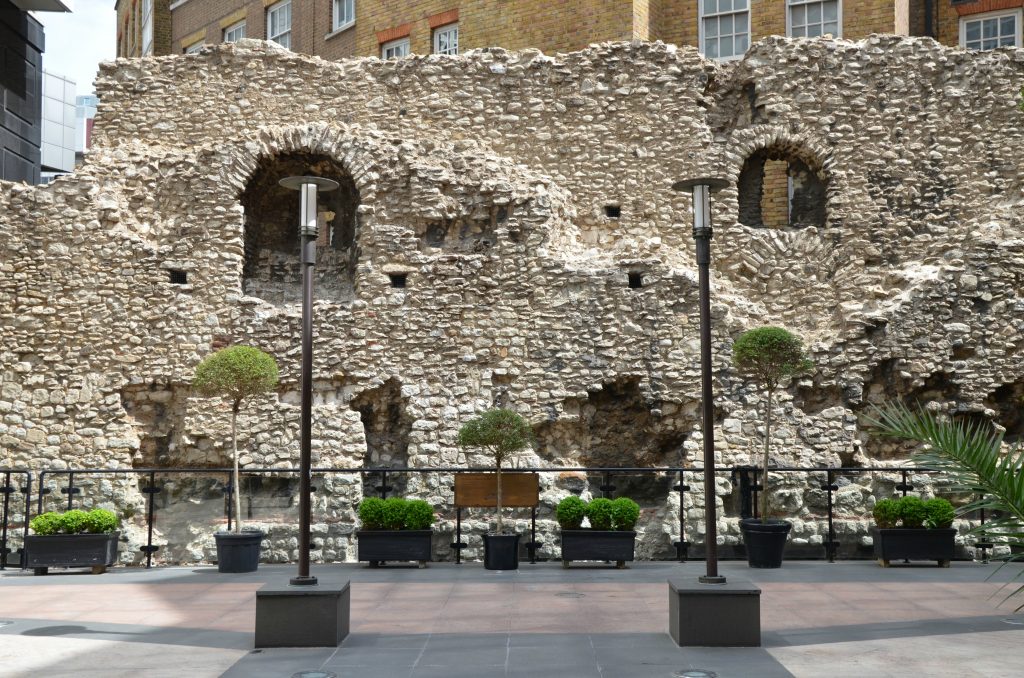
Around the city itself there are scattered traces of the ancient world. As one would expect, the expansive modernisation of the city has led to material being lost or decontextualized. Using the TimeTravelRome app will help you navigate between sites, including the remains of the ancient roads, defensive walls and gatehouses that are still standing to the north west, with Cripple Gate being perhaps the best preserved for visitors to explore. Towards the east of the ancient city, one can see the remains of the 3rd century Billingsgate Bath house. The ancient structure is still in a state of reasonably good preservation, and visitors are able to identify the main features of a typical Roman thermae, including the frigidarium (the cold room), the caldarium (hot room), and the traces of the hypocaust heating system.
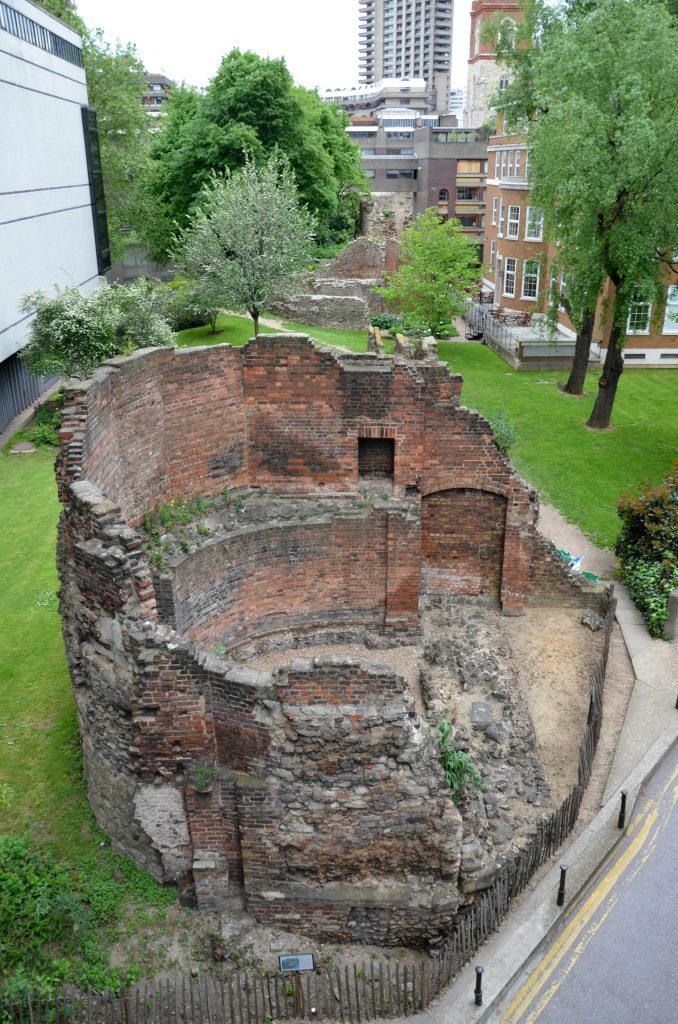
Most recently, London’s Mithraeum has re-opened to the public after extensive renovation works on the exhibit. This is arguably the highlight of a tour of Roman Londinium. The material associated with this eastern mystery cult – most notably the incredible tauroctony relief showing the god Mithras slaying the bull – is excellently curated and contextualised for visitors. A trip to London’s Mithraeum serves as an excellent reminder of the connections and processes of cultural exchange that occurred right across the ancient Empire.
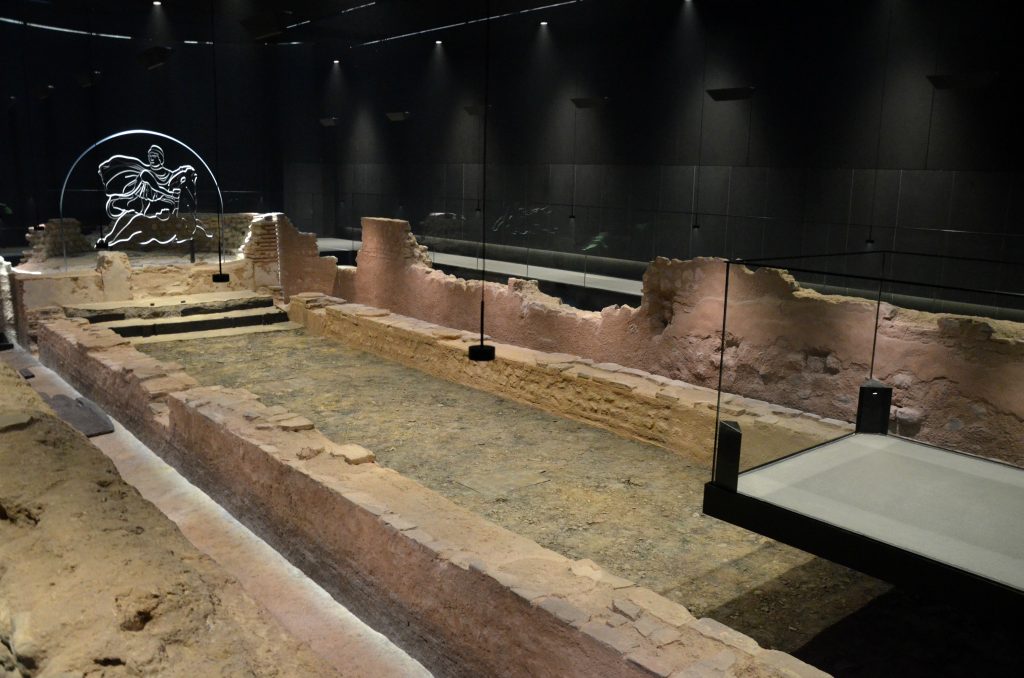
Londinium on Timetravelrome App:
Our app offers an extensive coverage of Roman archaeological sites in London.
Find more about Timetravelrome here: www.timetravelrome.com
[1] Eutropius, Breviarium, 6.22 (http://www.tertullian.org/fathers/eutropius_breviarium_2_text.htm)
[2] RIB2291, https://romaninscriptionsofbritain.org/inscriptions/2291
Author: Kieren Johns for Timetravelrome
Header picture: Carausius, 286 -293. Aureus, Londinium October 286-March 287. Obv.: Laureate, draped and cuirassed bust Rev.: Pax standing holding olive branch and vertical sceptre. Auction 114; lot 599. Used by permission of NAC.
